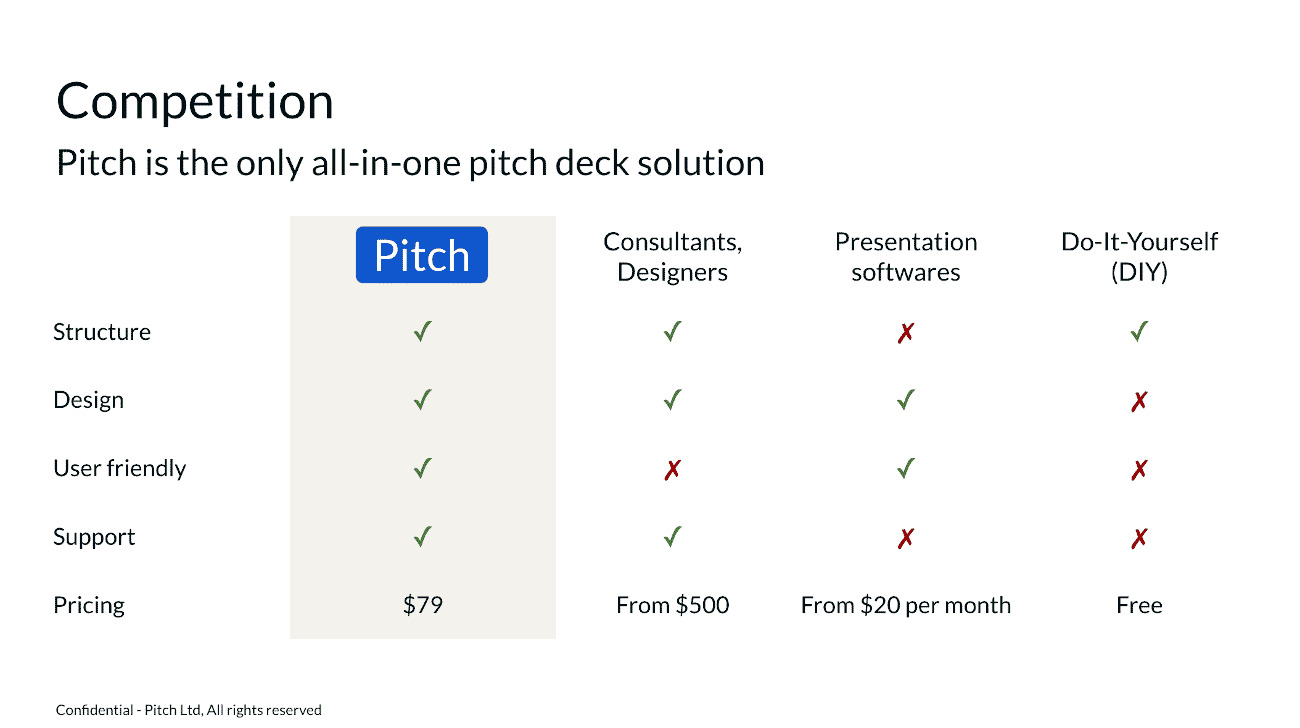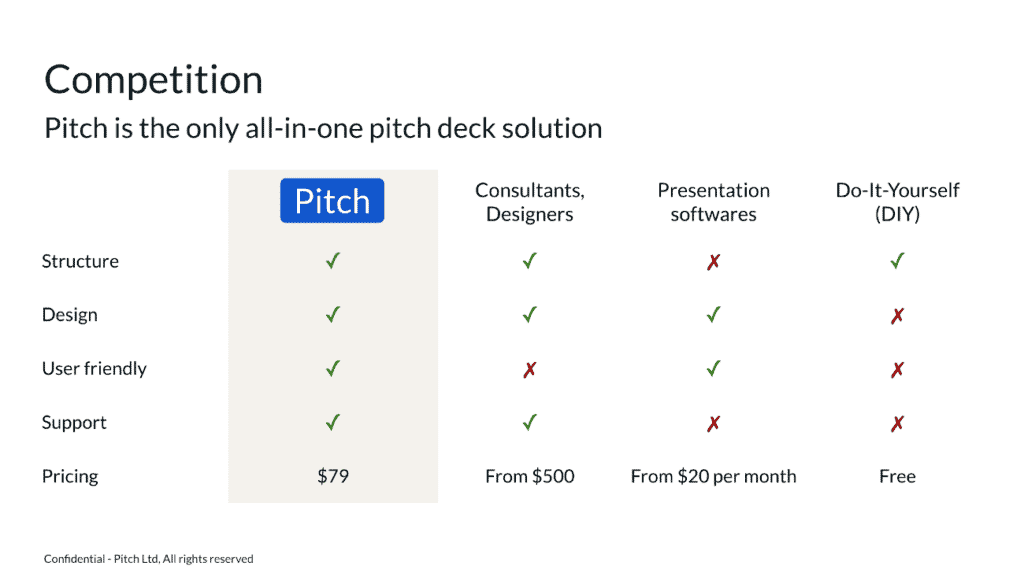Startup Pitch Deck: the Competition Slide [+ Examples]

Are you building a pitch deck for your startup? Make sure to include in your pitch deck a strong Competition slide that explains how you position yourself vs. competitors.
In this series of articles we show you how to create a stunning pitch deck for your startup.
The Competition slide explained
The competition slide of your pitch deck follows the market slide.
Indeed, once you have explained how big is your market and how fast it is growing, now is the time to explain what market share you may capture.
The market share isn’t necessarily a number you should include here. Instead, you should explain how your startup (or your product) position itself vs. competitors (or product alternatives).
A few common questions the competition slide should ideally answer are:
How fragmented is your market?
Are there 3 big players sharing 90% market share or thousands of small players? Here, refer to public market reports and your own understanding of the competitive landscape.
A few questions you must ask yourself:
- Who are your competitors?
- Are they local, regional, national or global?
- Are they pure players or diversified companies with subsidiary businesses? Etc.
We strongly recommend to use a table to demonstrate the type of competitors in your market vs. yourself. See an example in the pitch deck slide examples below. Whilst we do not necessarily compare your startup to specific companies, we are instead comparing your business model to the key other business models in the industry.
Where do you position yourself vs. competition?
Is your solution a game changer other competitors don’t have (yet)? Do you have competitors with similar products/services?
Ideally, you would create a small table with, for each type of competitors (e.g. global diversified companies, small pure players, etc.) the main characteristics they share or not. For instance:
- Do they all a global presence?
- What is their relative price positioning (expensive vs. accessible)?
- Do they offer both a desktop and mobile app, or just desktop?
- Etc.
In order to clearly lay out your positioning, use charts whenever possible (and relevant). Usually, we use matrices as can be seen in the examples below where you map out the different competitors based on 2 aspects (for example, price and number of products).
Pitch Deck Competition slide examples



